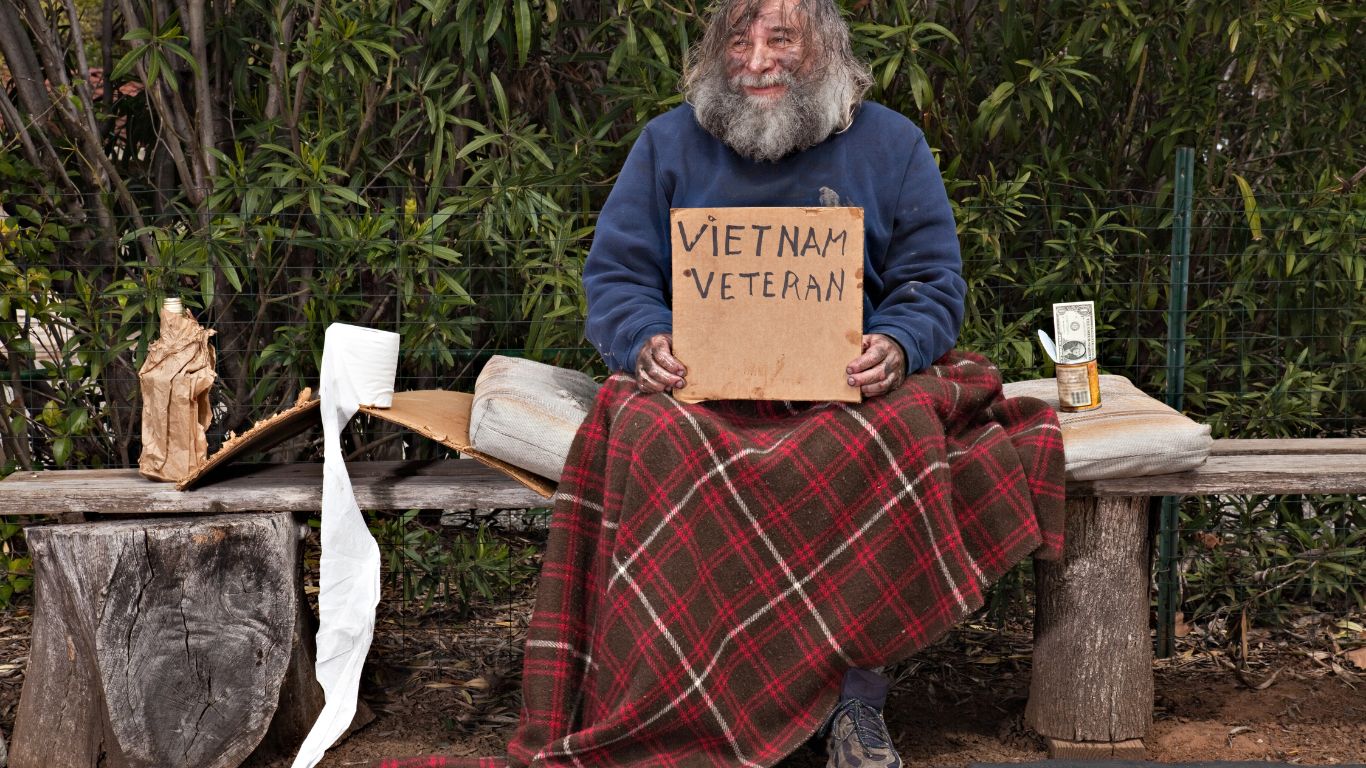The sight of a homeless veteran is a stark contradiction in a nation that celebrates its armed forces. While veterans are honored for their service, many face a grim reality after discharge, homelessness. From sleeping on sidewalks to living in cars or shelters, thousands of former service members in the United States struggle with securing safe and stable housing. This issue reflects not only a personal crisis for those affected but also a broader societal failure.
Table of Contents
Scope of the Problem: Data and Demographics
According to the U.S. Department of Housing and Urban Development (HUD), over 33,000 veterans were experiencing homelessness on a single night in 2023. While this number represents a 52% decline since 2010, it still exposes deep systemic cracks.
Common Characteristics of Homeless Veterans:
- Majority are male, but women veterans—especially single mothers—are increasingly affected.
- A large proportion are Black or Hispanic, reflecting racial disparities in housing and benefits.
- Many are dealing with mental health issues, substance abuse, or disabilities.
- Over 50% are chronically homeless, facing long-term instability rather than temporary crises.
Root Causes of Veteran Homelessness
1. Mental Health Conditions
Post-Traumatic Stress Disorder (PTSD), depression, and anxiety often go untreated, leading to job loss, isolation, and homelessness. Veterans returning from combat zones are particularly vulnerable.
2. Substance Abuse
Alcohol and drug dependency frequently stem from trauma or the stress of reintegration. Substance abuse often results in eviction or family estrangement.
3. Lack of Affordable Housing
Rising housing costs in urban areas, combined with low disability payments or no steady income, leave many veterans unable to find secure housing.
4. Unemployment and Underemployment
Many veterans struggle to transition to civilian jobs due to lack of transferable skills, resume gaps, or physical/mental impairments.
5. Discharge Status Issues
Veterans with less-than-honorable discharges often face disqualification from VA services, further reducing their support safety net.
Key Federal Programs Tackling Veteran Homelessness
1. HUD-VASH Program
A joint effort between HUD and the VA, the HUD-Veterans Affairs Supportive Housing (HUD-VASH) program combines:
- Housing Choice Vouchers (rent subsidies)
- Case management and clinical services
This program has housed over 100,000 veterans and is one of the most successful federal responses to veteran homelessness.
2. Supportive Services for Veteran Families (SSVF)
Run by the VA, SSVF offers:
- Temporary financial assistance
- Rental support
- Legal help
- Employment services
SSVF primarily helps veterans at risk of losing their homes, working as a preventive measure.
3. Grant and Per Diem (GPD) Program
This VA program funds community agencies to:
- Provide transitional housing
- Offer job training and rehabilitation
- Help veterans move toward permanent housing
GPD bridges the gap between emergency shelters and independent living.
Recent Federal Initiatives and Progress
- In 2022, the Biden administration committed to housing 38,000 more veterans by the end of the year, surpassing this goal by placing over 40,000 veterans in permanent housing.
- The PACT Act, passed in 2022, expanded healthcare for veterans exposed to toxic substances, indirectly aiding homeless veterans with service-related illnesses.
- American Rescue Plan funds were allocated for emergency housing vouchers and rental assistance for at-risk veterans during the COVID-19 pandemic.
Real-World Challenges: Why the Problem Persists
Despite measurable progress, the following issues continue to hinder efforts:
1. Long Waitlists for Housing Vouchers
Veterans approved for HUD-VASH often wait weeks or months to find landlords who will accept their vouchers due to low availability or stigma.
2. Lack of Coordination Between Agencies
Delays in communication between the VA, HUD, and local nonprofits result in service gaps and missed opportunities.
3. Mental Health Service Shortages
Even when housing is available, veterans often lack consistent mental health or addiction counseling, increasing the risk of relapse and eviction.
4. Limited Access in Rural Areas
Veterans in rural America face a shortage of services, fewer housing programs, and limited public transportation.
5. Systemic Bias and Discharge Status
Veterans with other-than-honorable discharges—often due to behavior linked to PTSD or MST (Military Sexual Trauma)—are often excluded from VA housing assistance, despite needing it the most.
Nonprofit and Community-Level Efforts
Numerous nonprofit organizations complement federal efforts by providing:
- Emergency shelter and food
- Addiction and mental health counseling
- Peer mentorship and legal assistance
Notable examples include:
- U.S. VETS: Offers housing, job placement, and treatment programs.
- The National Coalition for Homeless Veterans (NCHV): A national resource and policy group.
- Volunteers of America: Provides permanent housing for chronically homeless veterans.
These groups often work with faith-based communities, local governments, and veteran advocacy organizations to form coordinated responses.
Stories from the Ground
Many formerly homeless veterans describe how:
- Caseworkers from HUD-VASH or SSVF became their lifeline.
- Peer mentors who had similar experiences helped them stay sober.
- Transitional housing programs gave them time to rebuild their lives.
Their stories highlight the importance of personal connection and long-term case management, not just financial aid.
Policy Recommendations and The Way Forward
To further reduce veteran homelessness, experts recommend:
- More affordable housing units and incentives for landlords to accept veterans
- Expanding eligibility for VA housing assistance regardless of discharge status
- Increased investment in mental health and addiction recovery services
- Strengthening partnerships with nonprofits to create more local shelters and programs
- Investing in data systems to track and support veterans more effectively across agencies
A Call to Honor Beyond Words
Veteran homelessness in the United States is not a problem of scarcity—it’s a matter of priority, coordination, and compassion. While the government and nonprofit organizations have made major strides in reducing the number of homeless veterans, many still fall through the cracks.
True gratitude for military service means ensuring no veteran is left on the streets. It requires policy changes, sustained funding, and most importantly, community commitment to see those who served not just as heroes—but as neighbors, citizens, and individuals deserving of dignity and stability.


